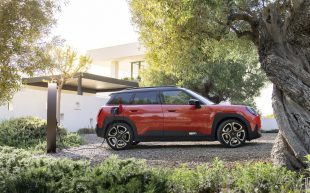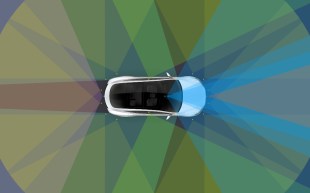New campaign highlights drivers' shocking ignorance about what to do when emergency services approach
Are you Blue Light Aware?
A SERIES of videos has been released aimed at helping drivers understand what to do when they see a police vehicle, ambulance or fire engine approaching on a ‘blue light’ journey, after 86% of emergency service drivers said they want road users to be more aware of how to handle the situation.
The Blue Light Aware campaign videos clarify the rules and safest ways to allow emergency vehicles to pass, with a focus on areas where confusion is most common, including traffic light junctions — where drivers are reminded not to break the law by driving through a red light, which could endanger them and other road users — and stretches of road with double white lines.
A four minute main video and 10 short animations, developed jointly by breakdown service GEM Motoring Assist and the Driving for Better Business programme in consultation with Highways England, are being shared across social media and on the Blue Light Aware website.
Last autumn, GEM Motoring Assist conducted a survey of 943 emergency service drivers, with 42% saying that traffic light junctions represented the highest risk locations with the greatest levels of confusion, followed by stretches of road with double white lines (26%) and residential streets (24%).
Most respondents (57%) said that five or more of the emergency journeys they drove in a typical week would be delayed or compromised by the actions of another driver – the majority (57%) because they saw the emergency vehicle too late, leading to panic. Nearly 40% of drivers appeared not to be aware of an emergency vehicle at all, with a shocking 2.5% acting to deliberately obstruct the emergency vehicle.
Fewer than 2% of respondents reported no delays in a typical week.
Asked which group of road users were generally the most helpful, emergency drivers said 88% of car drivers were either quite helpful or very helpful, compared with 83% of bus, coach and lorry drivers, 81% of pedestrians, 79% of motorcyclists, and 71% of cyclists.
Top of the emergency driver wish list was for other drivers to be more aware of what was going on (86%), to use mirrors (43%), to think before moving (40%), to avoid stopping in the middle of the road (35%) and near traffic islands (30%) and to use indicators when giving way (29%).
GEM chief executive Neil Worth commented: “Our survey shows that in general the vast majority of people want to help and do the right thing, but the approach of a blue light vehicle can take them by surprise. We hope that these videos will encourage everyone to be more aware, which in turn will minimise confusion and reduce risk.
Simon Turner, director of Driving for Better Business, said: “If we are better able to understand what emergency drivers want us to do – and what they want us not to do – then we will be much better placed to react early to their presence and minimise any delay or risk.”
Tweet to @Lizzie_Catt Follow @Lizzie_Catt
Fine mess: five mistakes drivers make when followed by an emergency vehicle
Metropolitan Police launch Road Crimes team as driving behaviour worsens under lockdown




